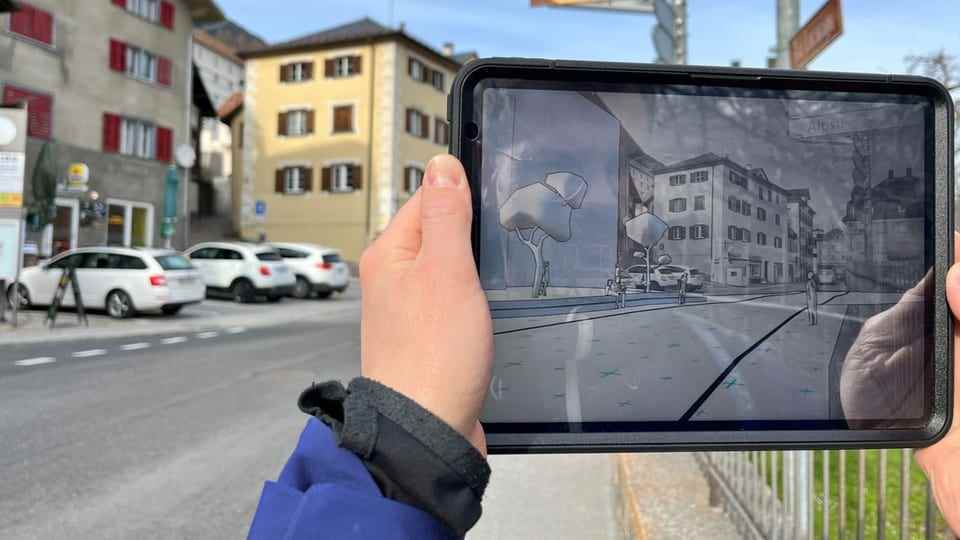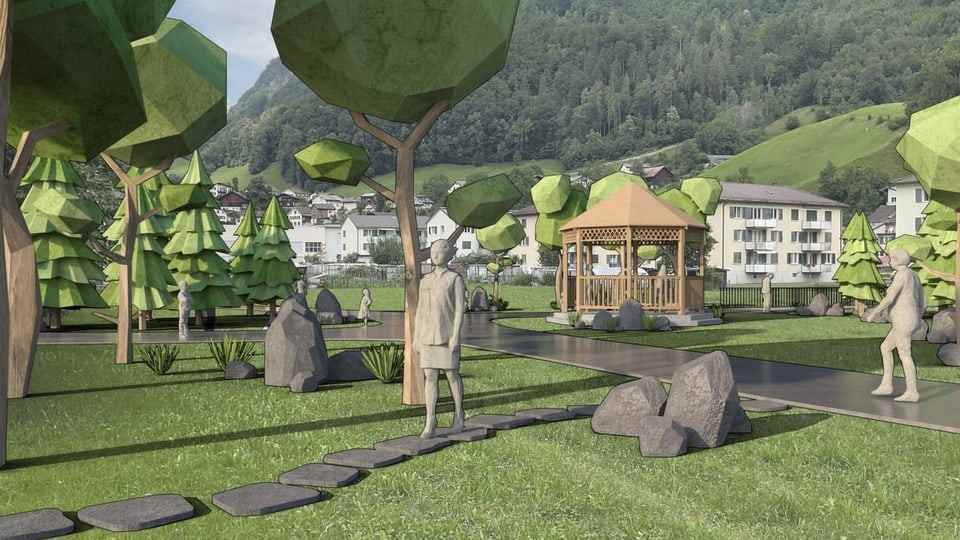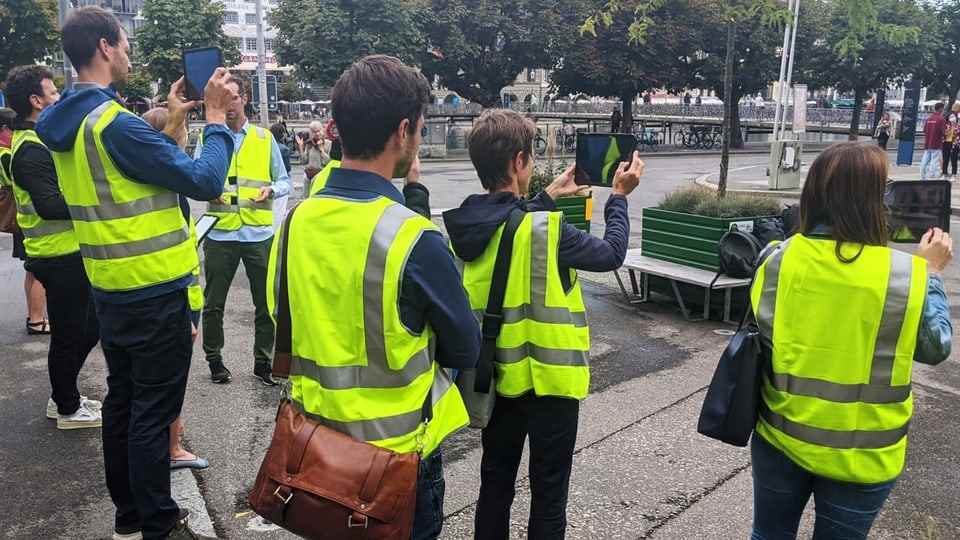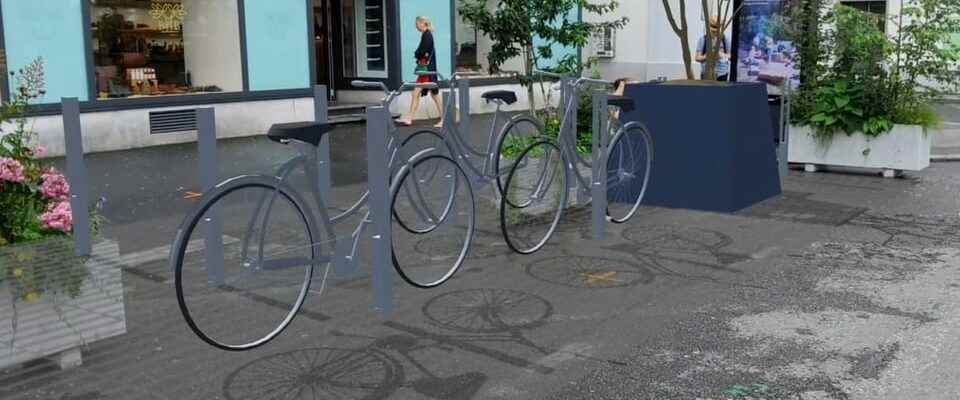contents
Researchers in Lucerne are working on how complex construction projects can also be made understandable for laypeople.
Tobias Matter walks along the Bahnhofstrasse in Lucerne, holding a tablet in front of his face with his arm outstretched. On the screen, the project manager from the Lucerne University of Applied Sciences and Arts sees in detail what the Bahnhofstrasse will be like in a few years according to the city of Lucerne’s plans: a car-free promenade, with a tree-lined avenue, benches, bicycle parking spaces and street cafés.
Legend:
The environment is supplemented with the construction plans using augmented reality. Here, for example, a bike stand on Lucerne’s Bahnhofstrasse.
University of Lucerne
The tablet’s camera records the actual environment and a program complements it with the virtual buildings and other objects that are planned. Tobias Matter kneels slightly in front of a digital tree and holds the tablet towards the treetop. “I can look at the planned construction project from all possible perspectives,” he says.
Better information for laypeople
The university’s research team digitally recorded the real area of the Bahnhofstrasse – and then projected the planned changes over it using augmented reality. You can already experience the future design in three dimensions on the tablet.

Legend:
If the tablet moves, the virtual environment also moves. The planned building can be viewed from all possible perspectives. Disentis, Graubünden.
University of Lucerne
With this very realistic representation, Tobias Matter would like to resolve the so-called participation paradox. He explains: At the beginning of a construction project, the local residents actually have the greatest leeway to influence the project. At the same time, the project is still very abstract at this point. “Usually there are only 2D plans, which are very difficult for laypeople to read. As a result, people aren’t really interested in it.” Or: You feel badly informed, have many unanswered questions and are therefore skeptical about the building project.
involve local residents
With augmented reality, such questions can be clarified right from the start, says Matter. Various communities are already working together with the Lucerne University of Applied Sciences and Arts. In addition to the city of Lucerne, Disentis for the renewal of the town center, or Glarus for the design of the park of a development.
The population will be better informed about upcoming construction projects. For example, augmented reality can show transparently and honestly “how high the planned building will be and where exactly it will cast shadows,” says the project manager.

Legend:
Depending on the status of the project, the virtual environment can be displayed realistically or more sketchily. Cartoni Park, Glarus.
University of Lucerne
The more actively those affected are involved in the planning, the more broadly based a project is. Tobias Matter is convinced that this would also prevent one or the other objection. That has yet to be seen, says Christoph Niederberger, director of the Swiss Association of Municipalities. Augmented reality is just one way of informing the population about a construction project.
Accessible to general population
Nevertheless, Niederberger sees great potential: “New population groups could be motivated to get more involved.” He is thinking above all of the young people who have felt little interest in the participation processes that have taken place so far.

Legend:
So far, the public has only had access to the augmented reality program on official tours. This is about to change. Bahnhofstrasse, Lucerne.
University of Lucerne
The augmented reality program is currently only accessible to a limited extent. Depending on the construction project, it could be viewed as part of a public tour. “The goal, however, is to make it accessible to the general public at some point,” says Tobias Matter. For example, with a download link on the website of the municipality or city concerned. A special device is not needed, practically all modern smartphones are suitable for it.
